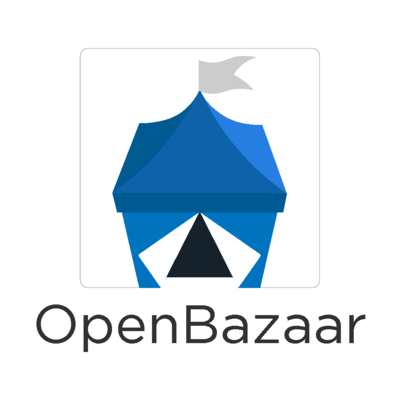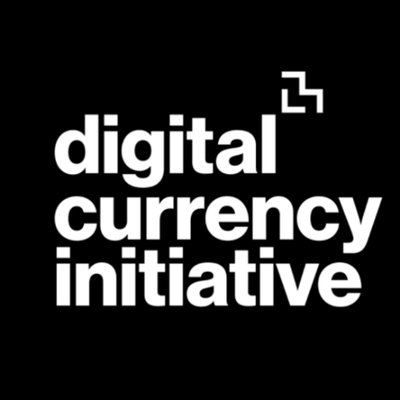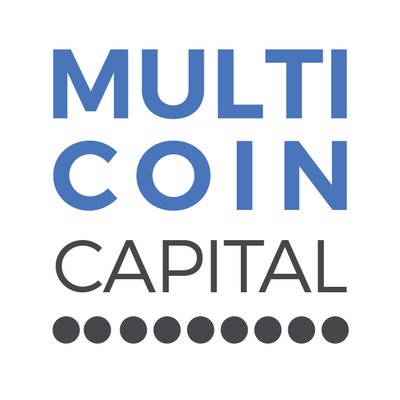
A peer-to-peer electronic cash system
BTC price live chart

Download Bitcoin wallet app
Store & Transfer BTC safely
Monitor your BTC balance in USD
Receive BTC in BTC network
Send Bitcoin by mobile phone number with 0% fee
BTC wallet mobile app for iOS and Android
Bitcoin basics
Bitcoin
Payments
Bitcoin was created as the first distributed consensus-based, censorship-resistant, permissionless, peer to peer payment network with an unprecedented scarce programable and native currency. The first digital currency in the world, without a central bank or administrator, is Bitcoin (BTC), the native asset of the Bitcoin blockchain. The bitcoin network is an emergent decentralized monetary institution that exists through the interplay of full miners, miners and developers. It is a newly emerged decentralized monetary institution that exists through the interplay between full nodes, miners, and developers. The social contract is created and opted into by the users of the network, hardened through game theory and cryptography. Bitcoin is the first, oldest and largest cryptocurrency in the world. It is the most popular, oldest, and largest cryptocurrency in the world.
Bitcoin token type
BTC
Native
Payments
BTC is a standard currency in the Bitcoin network. It is used as a native currency within the Bitcoin network. In the Bitcoin network, a BTC can be used for peer-to-peer payments and value storage. Bitcoin is used to pay fees for transactions. It is also used to payment the fee for transactions. For the sake of keeping Bitcoin desentralized, with its small and low-sized size of bitcoins, as well as in order to keep it decentralized, with its small, limited block sizes and low on-chain throughput, Bitcoin leverages off-chain payment channels for increased scalability. Bitcoin is a payments settlement network. It is in this respect that it acts as a payments settlement network.
The main role of Bitcoin in its lifetime was as a digital money for online marketers, the basis layer to transferring value from Bitcoin exchangers into other platforms and an instrument for capital-raising projects on new cryptocurrencies. It has most notably been used by itself as collateral for loan products, or speculative store of value.












Bitcoin history and first price
Fair Launch
Satoshi Nakamoto created the first bitcoins on January 3, 2009, by mining the genesis block. The genesis block mining reward (50 BTC) is unspendable due to the original client's block database and transaction database configuration. The coinbase of the first block included the following text:
"The Times 03/Jan/2009 Chancellor on brink of second bailout for banks"
This text has been interpreted both as a proof that the block was created on January 3, 2009, as well as a comment on fractional-reserve banking. Hal Finney received the first bitcoin transaction on January 12, 2009. Finney had downloaded the bitcoin software when it was first released and was known the be the creator of RPoW, the first reusable proof-of-work system, in 2004.
Pre-history Bitcoin borrows from nearly three decades of research by academics, cypherpunk practitioners, and hobbyists who tried to create similar payment protocols. Some of the most prominent projects that preceded Bitcoin include: Digicash, b-money, Hashcash, e-gold, and Bit Gold. Bitcoin is often associated with Austrian economic theories, anarcho-capitalist principles, and general libertarian politicking by virtue of the exclusive developer community to whom Nakamoto first released their white paper, certain protocol design characteristics, and the political affiliations of early Bitcoin investors.
Conception to Launch On October 31, 2008, at the peak of the Global Financial Crisis, just six weeks after the infamous investment bank, Lehman Brothers, declared bankruptcy, the pseudonymous Satoshi Nakamoto released the Bitcoin whitepaper to the cryptography mailing list. Titled "Bitcoin: A Peer-to-Peer Electronic Cash System", the whitepaper proposed a new electronic cash system that would allow fully peer-to-peer online payments without reliance on trusted third parties. Soon after the release of the whitepaper, Satoshi implemented the Bitcoin software as open-source code. On 3 January 2009, the Bitcoin network came into existence with Satoshi mining the genesis block of Bitcoin, which included a now-famous "The Times" headline in the coinbase both to prove the network’s fair launch and to make a political statement about the global financial system. The event marked the birth of the world's first non-sovereign, decentralized, digital money.
Post Launch Hal Finney, who invented the first reusable proof-of-work system (RPoW) in 2004, received the first Bitcoin transaction (10 bitcoins) on January 12, 2009. In 2010, the first known commercial transaction using bitcoin occurred when programmer Laszlo Hanyecz bought two Papa John's pizzas for 10,000 bitcoins.
In August 2010, a major vulnerability in the Bitcoin protocol was spotted and exploited in the Bitcoin network, allowing users to create an infinite amount of bitcoins. The transactions exploiting the vulnerability were quickly spotted and erased for the Bitcoin blockchain, with the vulnerability being patched in a network upgrade of the Bitcoin protocol. This was the only major security flaw found and exploited in Bitcoin's history.
In December 2010, amidst rising publicity from Bitcoin's use in financing Wikileaks, Satoshi Nakamoto, disappeared from involvement with Bitcoin. It is unknown why Satoshi disappeared from the project, although some believe Satoshi, cognizant of past struggles to launch a digital currency, recognized that a leader of the Bitcoin project could be a central point of failure. It is estimated that Nakamoto had mined about one million bitcoins before disappearing in 2010 when he handed the network alert key and control of the code repository over to Gavin Andresen.
Silk Road & Mt. Gox One of the most iconic early use cases for Bitcoin was the Silk Road. Launched in early 2011, the Silk Road was a darknet marketplace that allowed users to buy and sell a wide variety of goods including, most notably, illegal drugs. Underpinning the Silk Road was the Tor network, which allowed users to browse the Silk Road anonymously and securely without potential traffic monitoring, and Bitcoin which provided a censorship-resistant payment rail for pseudonymous transactions. Over the course of its life, it is estimated that the Silk Road facilitated more than $1.2 billion in transactions, collecting over $80 million in sales commissions, leveraging the Bitcoin network as its payment rail. The site was shut down in 2013 when the FBI took advantage of the Silk Road’s centralized infrastructure, arresting founder Ross Ulbricht, and shuttering the site.
Founded by Jed McCaleb in July 2010, and led by Mark Karpeles until it collapsed, Mt. Gox was one of the earliest Bitcoin exchanges in the world. Based in Tokyo, Japan, the exchange would go on to handle over 70% of all bitcoin (BTC) transactions worldwide at its peak. Known for its chronic security issues, Mt. Gox was infamously hacked in 2014, losing 850,000 bitcoins worth about $450 million at the time. The hack sent the price of Bitcoin, which was in the midst of one of its first major price bubbles, plummeting. Bitcoin would sink into a bear market with prices not recovering until the 2017 bull run.
2017 Bubble & Bitcoin Cash Hard Fork The 2017 price bubble was a watershed moment for Bitcoin. The price of Bitcoin rose more than 1900% from just under $1,000 at the beginning of the year to near $20,000 at its peak in December. At its peak, Bitcoin's market capitalization eclipsed $325 billion. Along with the proliferation of Initial Coin Offerings, powered by Ethereum, Bitcoin's incredible 2017 run propelled cryptocurrency into mainstream consciousness, among the most discussed phenomena of 2017.
Also notable in 2017, Bitcoin experienced its most contentious fork to date. Amidst rising transaction fees on Bitcoin and increasingly divergent views on scaling Bitcoin, an agreement was reached amongst prominent Bitcoin stakeholders in what is now known as the "New York Agreement". The agreement was to support a set of network upgrades called SegWit2x. The proposal was backed by over 80% of Bitcoin's hash rate. However, despite the desires of miners, users wanted to activate SegWit without the 2MB block size increase, the philosophy underpinning this decision being that the users controlled the network, not miners and Bitcoin businesses. Subsequently, they set a date (August 1, 2017) where Bitcoin would soft fork to support SegWit and keep the 1MB block size. Enough nodes signaled support for it that they forced miners to accept or have their blocks rejected by the network. A faction of the bigger blocks camp, rejected SegWit altogether, citing frustrations with the prioritization of SegWit over bigger blocks, and on August 1, 2017, they launched a hard fork of Bitcoin called Bitcoin Cash, with 8MB block limits. These events marked, one end, a landmark demonstration of power by the users of the Bitcoin network, and on the other end, the first great schism within the Bitcoin community.
2018 - 2019 After peaking in December 2017, Bitcoin, along with the rest of the cryptocurrency market in January 2018, crashed, sending the cryptocurrency market into its latest bear market. Since then Bitcoin has dropped as low as $3,200, more than 80% below its ATH. However, while prices have yet to recover to 2017 highs, the institutionalization of Bitcoin has picked up significantly. Traditional Wall Street institutions including Chicago Mercantile Exchange, Intercontinental Exchange, and Fidelity have all launched cryptocurrency offerings, opening up the market to institutional investors. There are now several regulated exchanges and custodians. Furthermore, regulatory clarity around Bitcoin has improved dramatically with SEC Chairman, Jay Clayton, revealing at a Congressional hearing in February 2018, that the SEC does not consider Bitcoin to be a security.
Since it reached its cycle low in February 2019, Bitcoin's price has recovered considerably, rising as high as $13,000 in June. With the recent announcements of Facebook's Libra project and China's Central Bank digital currency, governments and multinational corporations around the world have begun to look at cryptocurrencies more seriously. American officials are debating a digital dollar and lawmakers around the world are considering the central bank digital currency (CBDC) options. Furthermore, there have been numerous cryptocurrency-related hearings since Libra was announced. China has recently announced blockchain was a revolutionary technology and that it would make blockchain technology a strategic imperative for the country. Bitcoin's price rose more than 40% after the announcement, its highest intraday movement since 2011.
2020 - 2021 Bitcoin traded sideways into 2020, but the onset of the novel Coronavirus (COVID-19) Pandemic saw world markets take the biggest dips since at least the 2007-08 Mortgage Crisis. Bitcoin did not escape the dip – in less than 48 hours it lost half of its value, going below $4,000 for the first time since March of 2019. Luckily for bitcoiners, bitcoin rebounded, returning to its pre-pandemic price in less than a month.
Bitcoin’s ascent recovery out of the March turmoil drew wider media and institutional attention and lent credibility to its store of value narrative. Although it remained around $10,000 throughout Ethereum’s firey DeFi summer, bitcoin would start to trend upwards into the fall and by early November bitcoin hit $14,000. Whether it was unprecedented levels of money printing by the Federal Reserve, its V-shaped recovery in April, or direct stimulus payments to millions of Americans, it was clear bitcoin wasn’t done at $14,000 as it crossed $20,000 for the first time ever on December 16, 2020. Two weeks later it hit $28,000. Then, on January 8, 2021, bitcoin set a new all-time high of $41,429.38. Since hitting $41,000 bitcoin has mostly drifted in the $30,000.
Bitcoin’s price wasn’t the only thing rapidly accelerating in 2020. Institutional adoption skyrocketed. Led by Paul Tudor Jones of Microstrategy (>$1 billion), institutions joined the bitcoin world en masse. From insurance companies like MassMutual ($100 million) to investment firms like Ruffer ($744 million) new groups continue to adopt bitcoin. And institutions aren’t alone – entrepreneurs like Elon Musk and politicians like Miami Mayor Francis Suarez have increasingly promoted bitcoin. Even athletes have joined the space, as NFL player Russell Okung partnered with Bitcoin Lightning Company Zap to become the first professional sports player ever to be paid in bitcoin
Satoshi Nakamoto published the Bitcoin whitepaper
Bitcoin's genesis block is mined.
BIP 011 implemented M-of-N-signatures required transactions as a new 'standard' transaction type. This BIP enabled secured wallets, escrow transactions, and other use cases where redeeming funds requires more than a single signature.
BIP 016, building off of BIP 013, which introduced Pay to Script Hash address types, implemented a new "standard" transaction type for the Bitcoin scripting system and defined additional validation rules that apply only to the new transactions.
The BIP moved the responsibility for supplying the conditions to redeem a transaction from the sender of the funds to the redeemer. Furthermore, it allowed a sender to fund any arbitrary transaction, no matter how complicated, using a fixed-length 20-byte hash that is short enough to scan from a QR code or easily copied and pasted
BIP 032 introduced Hierarchical Deterministic Wallets ("HD Wallets"), wallets that can be shared partially or entirely with different systems, each with or without the ability to spend coins. HD wallets allow for numerous cryptocurrency wallets (public-private key pairs) to be generated from a single seed phrase.
BIP 042 introduced a finite supply for Bitcoin. After discovering a bug that would allow Bitcoin's money supply to grow indefinitely, forever, developers introduced a hard cap for Bitcoin.
BIP 065 introduced a new opcode (OP_CHECKLOCKTIMEVERIFY) for the Bitcoin scripting system that allows a transaction output to be made unspendable until some point in the future. This was a fundamental addition paving the way for payment channels.
BIP 112 implemented a new opcode (CHECKSEQUENCEVERIFY) for the Bitcoin scripting system that in combination with BIP 68 allows execution pathways of a script to be restricted based on the age of the output being spent.
This plan was proposed as BIP 148, a Bitcoin Improvement Proposal, from a pseudonymous developer named a href=" "Shaolinfry/a. It was proposed in reaction to a plan referred to as "Segwit2x" which was an agreement among miners, developers, businesses, and investors to support SegWit (a soft fork) and a 2MB block size (hard fork). Users rejected this proposal and deployed a user-activated soft fork in a demonstration that users controlled the Bitcoin network.
BIP 141 defined a new structure called a "witness" that is committed to blocks separately from the transaction Merkle tree. This structure contains data required to check transaction validity but not required to determine transaction effects. In particular, scripts and signatures are moved into this new structure. BIP 143 defines a new transaction digest algorithm for signature verification in version 0 witness program, in order to minimize redundant data hashing in verification and to cover the input value by the signature BIP 147 proposed changes to the Bitcoin transaction validity rules to fix a malleability vector in the extra stack element consumed by OPCHECKMULTISIG and OPCHECKMULTISIGVERIFY BIP 148 Defined soft fork flag day activation of the segregated witness deployment known as "segwit". Activated BIP141, BIP143, and BIP147. The date was set for August 1, 2017, when users would decide whether or not to deploy SegWit
Bitcoin technology explained
"Bitcoin" is a label used for a protocol and a currency.
Bitcoin, the currency, is bits of data usable outside the limitations of the protocol using second-layer solutions like Lightning Network payment channels.
Bitcoin, the protocol, is a distributed, time-stamped ledger of unspent transaction output (UTXO) transfers stored in an append-only chain of 1MB data blocks. A network of mining and economic nodes maintains this ledger by validating, propagating, and fighting to include mempool transactions in new blocks. Economic nodes (aka "full nodes") receive transactions from other network participants, validate them against network consensus rules and double-spend vectors, and propagate the transactions to other full nodes that also validate and propagate. Valid transactions are sent to the network's mempool waiting for mining nodes to confirm them via inclusion in the next block.
Mining nodes work to empty the mempool usually in a highest-to-lowest fee order by picking transactions to include in the next block and racing against each other to generate a hash less than the target number set by Bitcoin's difficulty adjustment algorithm. Bitcoin uses a Proof-of-Work (PoW) consensus mechanism to establish the chain of blocks with the most accumulated “work” (a.k.a., energy spent on solved hashes) as the valid chain. Other network peers can cheaply verify the chain’s work.
Mining difficulty regularly adjusts to maintain Bitcoin's average ten-minute block schedule. Mining nodes add new blocks to whatever chain has the largest accumulated proof of work maintained by a network of economic nodes with downloaded copies of the same chain.
Learn More: Bitcoin Developer's Guide Mastering Bitcoin

































Bitcoin supply limit
Inflationary
Decreasing Issuance
Yes
20999999.9769
Bitcoin Halving Schedule The rate at which new bitcoins are created is algorithmically cut in half roughly every 4 years (210,000 blocks). Bitcoin has gone through three halvings to date; November 2012, July 2016 and most recently in May 2020. Since blocks are generated every 10 minutes on average and starting at 50 new bitcoins per block when the system was launched in 2009, this creates a very well-defined supply curve.
The stability of Bitcoin's monetary policy Bitcoin's monetary policy is disinflationary. The annual rate of inflation decreases through time. The current supply cap of Bitcoin is set at 21 million coins. The stability of Bitcoin's monetary policy provided by this well-defined supply cap and halving schedule is a key differentiator versus other crypto assets.
Learn More: A Model for Bitcoin's Security and the Declining Block Subsidy




















Bitcoin consensus
Proof-of-Work
Nakamoto Consensus
10 min
Consensus Bitcoin pioneered and currently uses Nakamoto Consensus whereby the valid chain is the longest chain with the most accumulated proof-of-work. Consensus in Bitcoin, and other systems using Nakamoto Conensus, is probabilistic because there is always a chance that a new, longer competing chain could emerge with more accumulated proof-of-work, that would invalidate the current chain.
Learn More: How Does Distributed Consensus Work Anyways? Nakamoto Consensus
Mining Miners solve computational puzzles to generate new blocks using a SHA-256 algorithm. In this process, miners compete to generate a hash less than the target number set by Bitcoin's difficulty adjustment algorithm. The target difficulty level is adjusted every 2016 blocks.
Although open to anyone with a CPU, Bitcoin mining is now dominated by ASICs situated in enterprise-scale data centers. In order to smooth individual miner revenue as mining has become more competitive, mining is now done in pools where participants contribute hash power to the pool and receive a proportional share of the profits if the pool finds a valid block.
Learn More: Cryptocurrency Mining State of Cryptocurrency Mining
Bitcoin governance
Model Overview Bitcoin governance is the process by which protocol rules are decided upon, implemented, and enforced. Users (full nodes) adopt new rules according to their subjective views on what Bitcoin is and should be. If two or more individuals adopt the same set of rules, they form an inter-subjective social consensus of what “Bitcoin” is. It is in this respect that many conceptualize Bitcoin as being set by a social contract. Every time rule changes are contemplated, the rules of the contract are decided and renegotiated continuously between stakeholders. Protocol changes are legitimized when users agree to adopt the new changes. Once adopted, the Bitcoin protocol automates the enforcement of the social contract.
Process Overview Protocol development is governed by a proposal process whereby anyone in the open-source Bitcoin community can submit Bitcoin Improvement Proposals ("BIPs"). After debate by the community, when consensus has emerged, the Bitcoin Core maintainers merge code changes into Bitcoin Core's GitHub Repository. Once new code has been implemented into the Bitcoin Core client, users of the network (full nodes) must be persuaded to adopt the new changes. Protocol changes are “ratified” on-chain when the majority of the network adopts the upgrade and doesn’t break consensus.
Once rules are adopted on-chain, all new transactions and block proposals are subject to the agreed-upon rules. Full nodes only accept new transactions and block proposals that are valid according to the rules of the Bitcoin protocol. Anything that is not valid will be rejected. Thus, miners must implement the prevailing rules of the network in order to participate in the block creation process.
User Activated Hard Fork 2017's User Activated Soft Fork Event provided an illustrative case study on Bitcoin governance in practice.
As early as 2010, shortly after Satoshi implemented a block limit into Bitcoin, discussions around block size began. These discussions largely stayed in the background until 2017 when tensions within the Bitcoin community rose over rising transaction fees and increasingly divergent opinions on scaling Bitcoin. In May 2017, a meeting between miners, businesses, investors, and core developers took place at the Consensus conference in New York, in what is now referred to as the "New York Agreement". The product of this meeting was an agreement to support SegWit (a soft fork) and a 2MB block size (hard fork).
Known as SegWit2x, this proposal was backed by over 80% of the network’s hash rate. However, despite the desires of miners, users wanted to activate SegWit without the block size increase. This plan was proposed as BIP 148, a Bitcoin Improvement Proposal, from a pseudonymous developer named Shaolinfry. Soon after, users set a date (August 1, 2017) where Bitcoin would soft fork to support SegWit and keep the 1MB block size. Eventually, enough nodes signaled support for it, forcing miners to accept or have their blocks rejected by the network.
Many see this user-activated soft fork (UASF) as a pivotal moment in Bitcoin’s history. The philosophy underpinning the event was that users controlled the network, not miners. The event not only illustrated the balance of power within Bitcoin's network, but also calmed suspicions that parties such as miners, businesses, or Bitcoin Core developers, controlled Bitcoin.
Learn More: Bitcoin Governance Unpacking Bitcoin's Social Contract Who Controls Bitcoin Core? Bitcoin Miners Beware: Invalid Blocks Need Not Apply
Who regulate Bitcoin in 2026?
On April 28, 2018, the SEC Chairman, Jay Clayton, revealed that the SEC does not consider Bitcoin (BTC) to be a security.
"It's a complicated area. Because, as you said, there are different types of cryptoassets. Let me try and divide them into two areas. A pure medium of exchange, the one that's most often cited, is Bitcoin. As a replacement for currency, that has been determined by most people to not be a security.
Then there are tokens, which are used to finance projects. I've been on the record saying there are very few, there's none that I've seen, tokens that aren't securities. To the extent something is a security, we should regulate it as a security, and our securities regulations are disclosure-based, and people should follow those and provide the information that we require"
The Securities Framework Asset Ratings of the Crypto Rating Council (CRC) attributed the score of 1 out of 5 to Bitcoin and provided the below summary:
- Absence of a marketed token sale and corresponding marketing efforts
- Decentralized development and usage
- The anonymity of the Project Team
The CRC* is a member-owned and operated organization whose purpose is to assess if a crypto asset, or its development, issuance, and use have characteristics that make it more or less likely to implicate federal securities laws. According to the CRC framework, a score of 5 results when an asset appears to have many characteristics that are consistent with the Howey-test factors. A score of 1 results when an asset appears to have few characteristics that are consistent with the Howey-test factors.*
Store Bitcoin with Cropty cryptocurrency wallet by 3 simple steps:
- Download the app from the Apple AppStore or Google Play, or open your browser wallet.
- Create your Cropty wallet account with Face ID or Touch ID security options.
- Transfer BTC from external wallet.
Receive Bitcoin to your Cropty wallet by QR-code, phone number, e-mail and nickname:
- Download the app from the Apple AppStore or Google Play, or open your browser wallet.
- Create your Cropty wallet account, set up a nickname.
- Click ‘Receive’ and follow the instructions.
You can transfer your Bitcoin holdings and store it safely with Cropty wallet. Cropty secures safety of your holdings through various verification options like using password, authenticator app, Face ID, Touch ID and backup codes. You can be sure no one can get access to you Bitcoin holding except you.
Start investing in Bitcoin with Cropty cryptocurrency wallet by 3 simple steps:
- Download the app from the Apple AppStore or Google Play, or open your browser wallet.
- Create your Cropty wallet account, set your authentication settings.
- Transfer BTC from external wallet.
The Cropty wallet provides the most convenient application for storing and transfering Bitcoin. Cropty targets to become one the best crypto wallets for Android and iOS in 2026. Cropty provides convenient application and secure custodial services, built for crypto beginners, as well as for crypto-savvies.
You can receive Bitcoin donations instantly with Cropty wallet. Download Android or iOS app or open the web version, sign up, click ‘Receive’ and follow simple instructions. Share your address with someone who wants to donate you in crypto.
You can receive Bitcoin donations instantly with Cropty wallet. Download Android or iOS app or open the web version, sign up, click ‘Receive’ and follow simple instructions. Share your address with someone who wants to donate you in crypto.
You can send Bitcoin instantly without fee in the Cropty wallet. Download Android or iOS app or open the web version, sign up, click ‘Send’, choose ‘Send via e-mail, phone number or nickname’ and follow simple instructions.
- Sign up to Bitcoin wallet.
- Top up your balance with Bitcoin.
- Store, trade or deposit your Bitcoin.
- Get Bitcoin deposit interest directly to your Cropty wallet.









